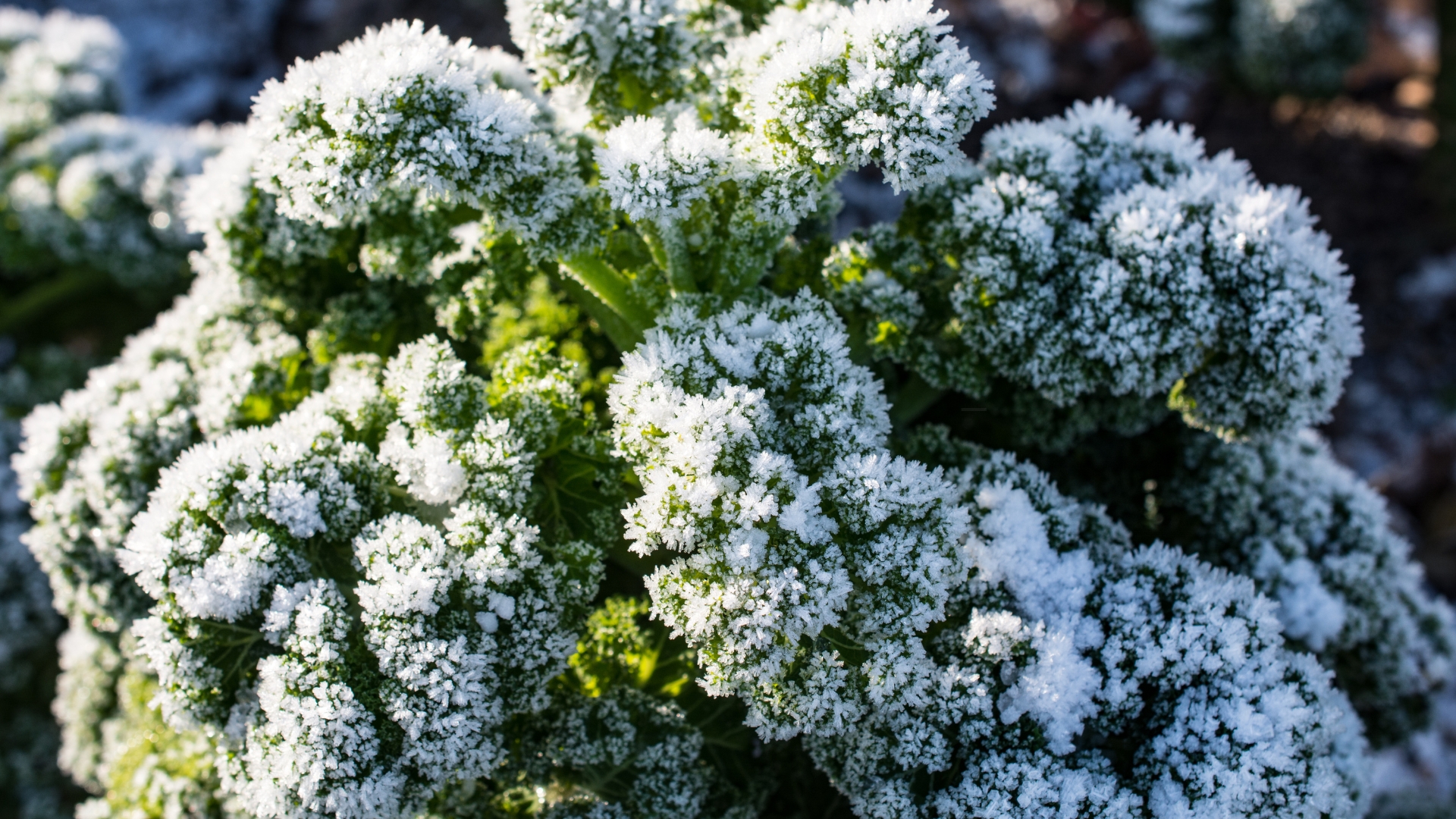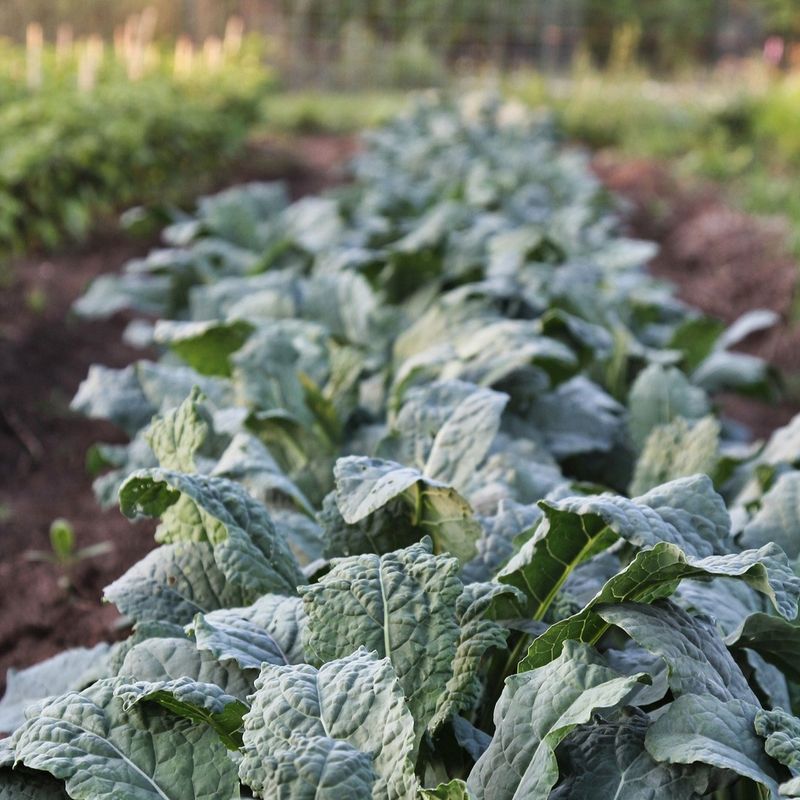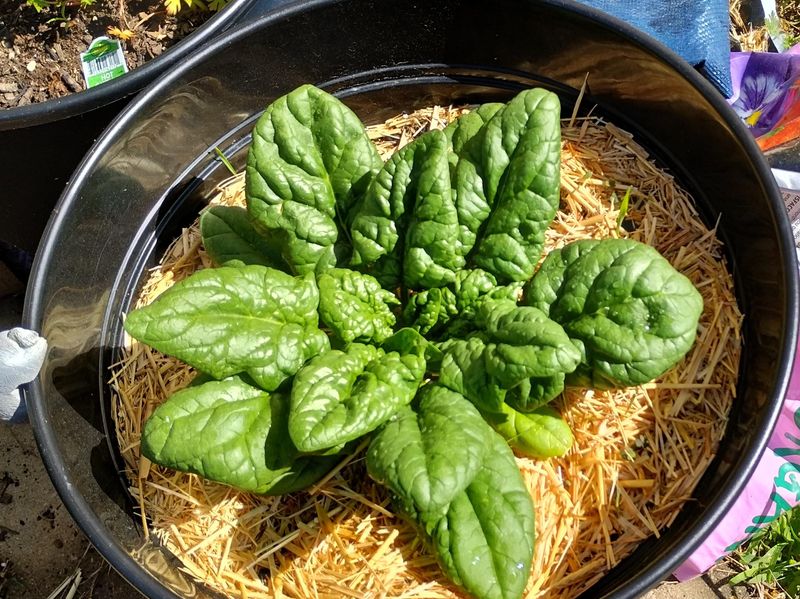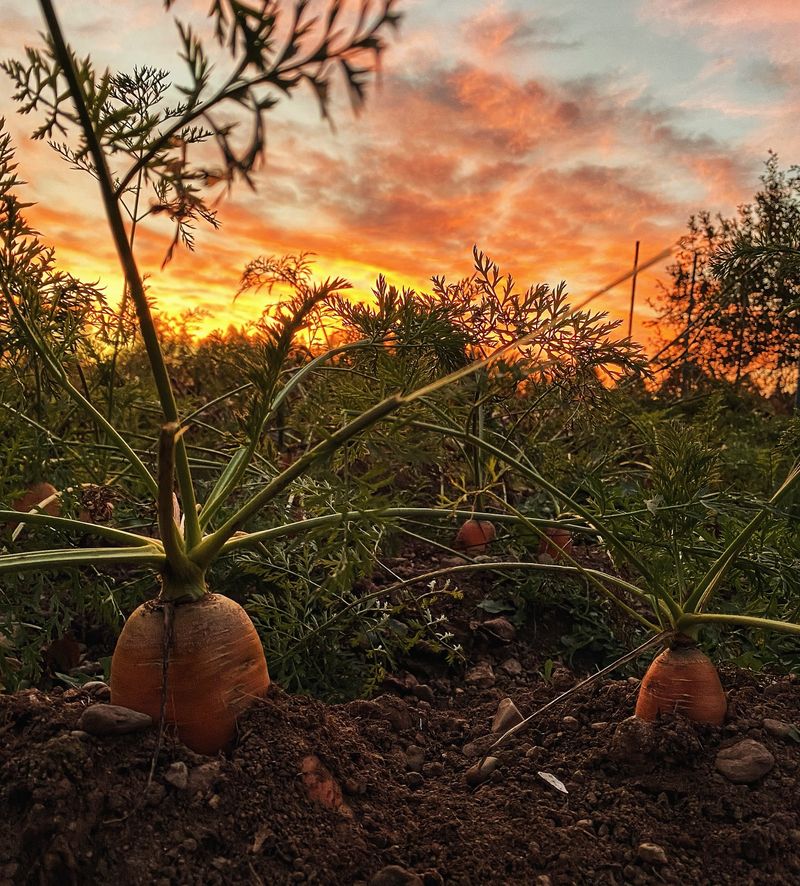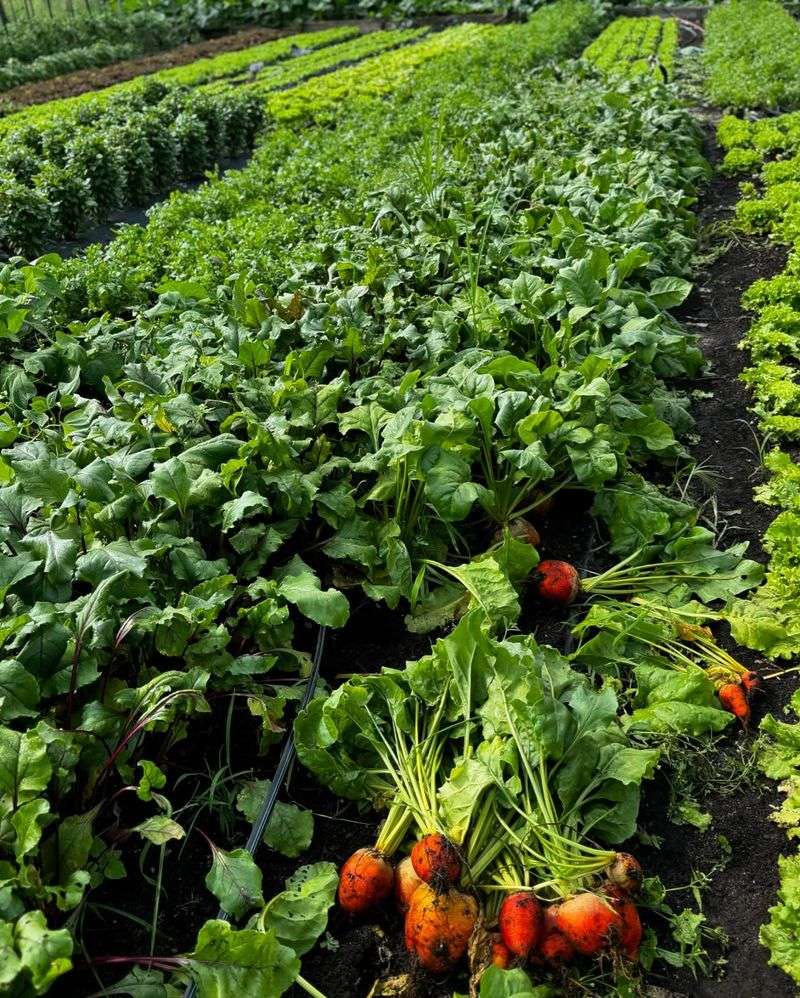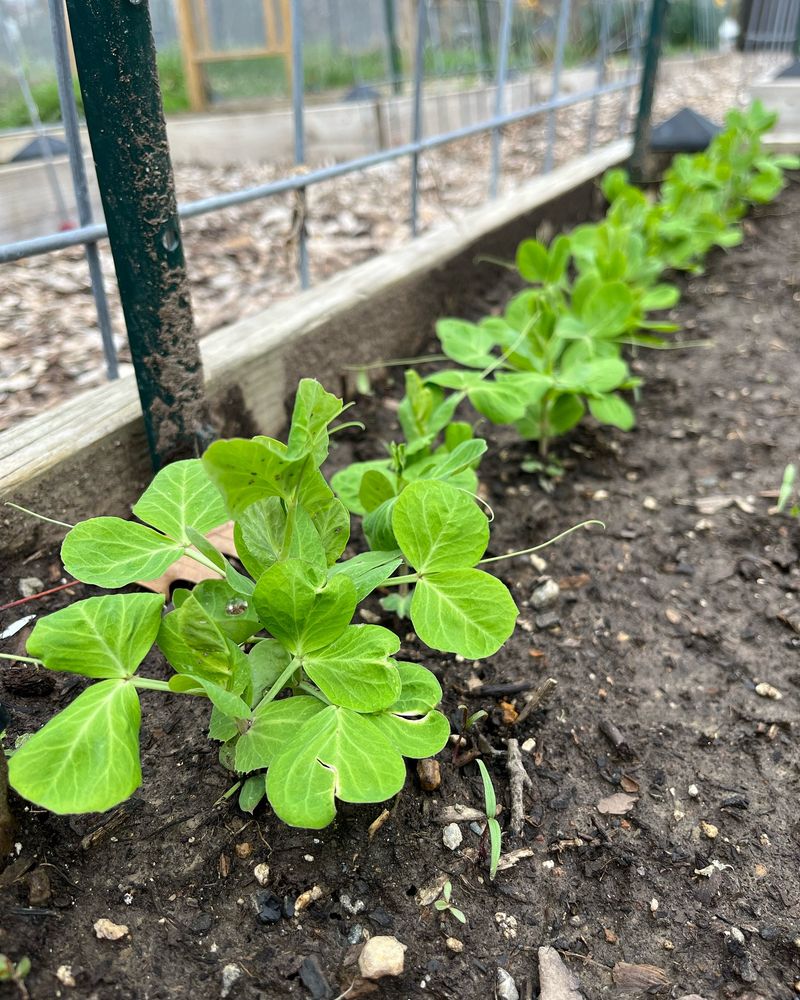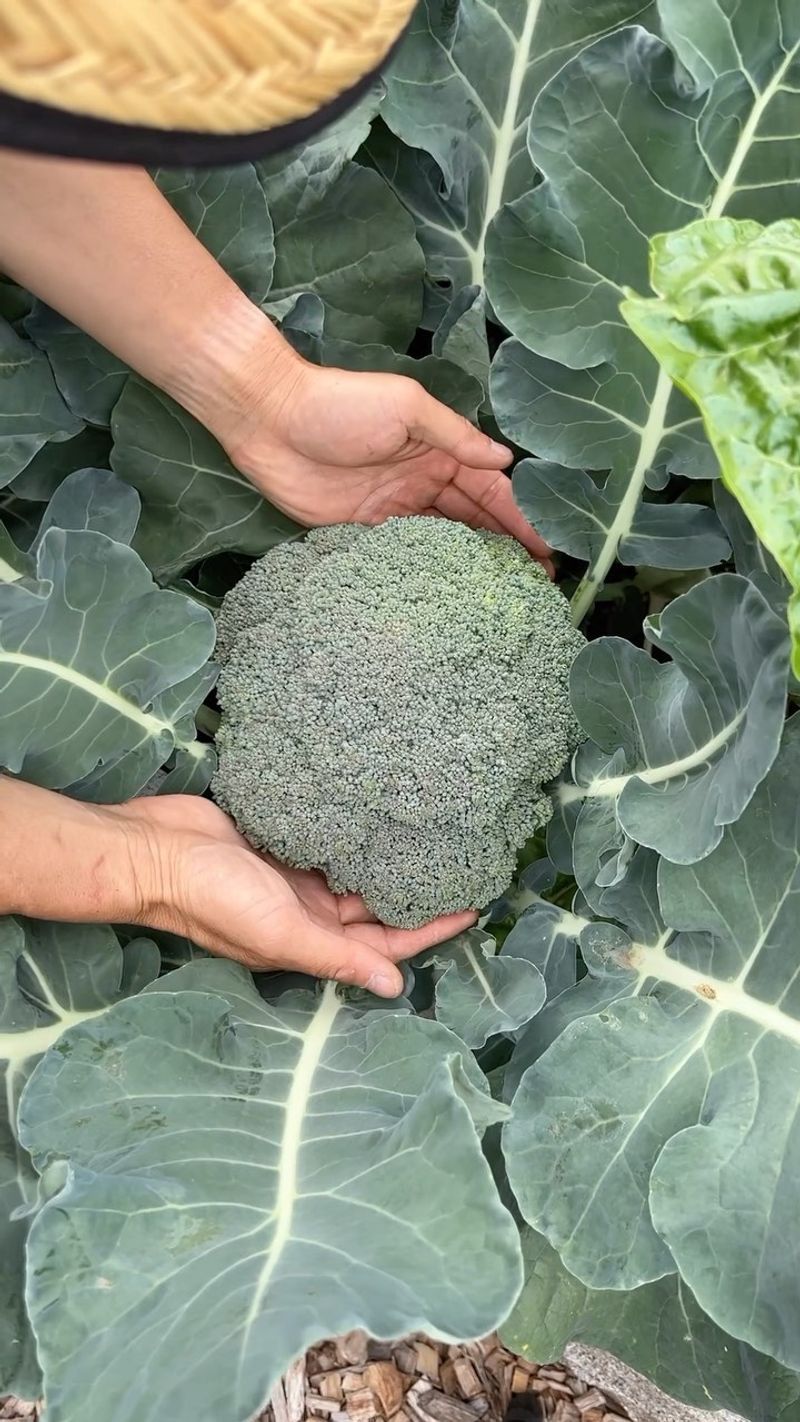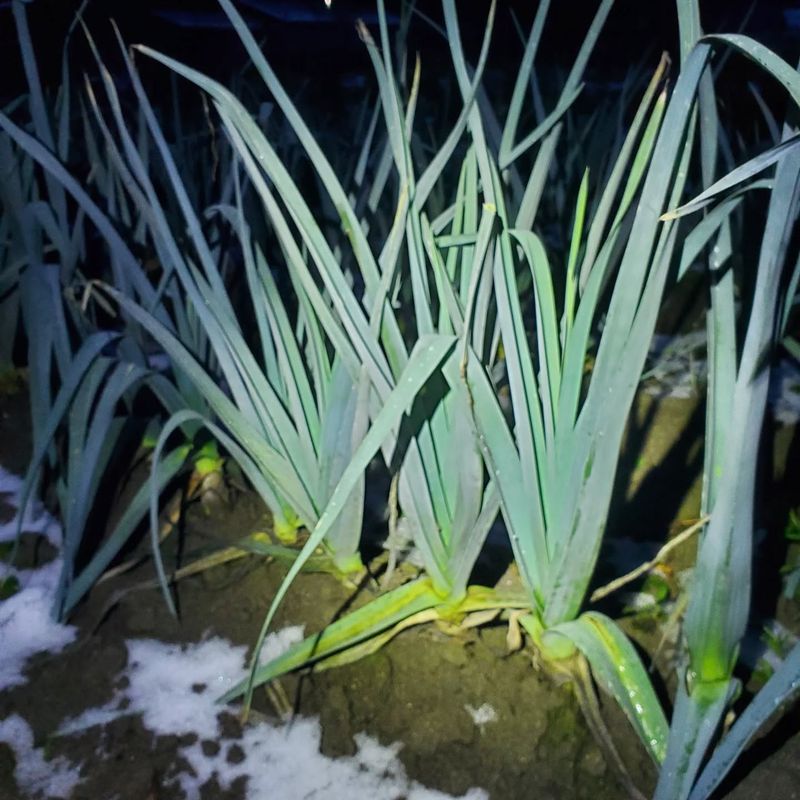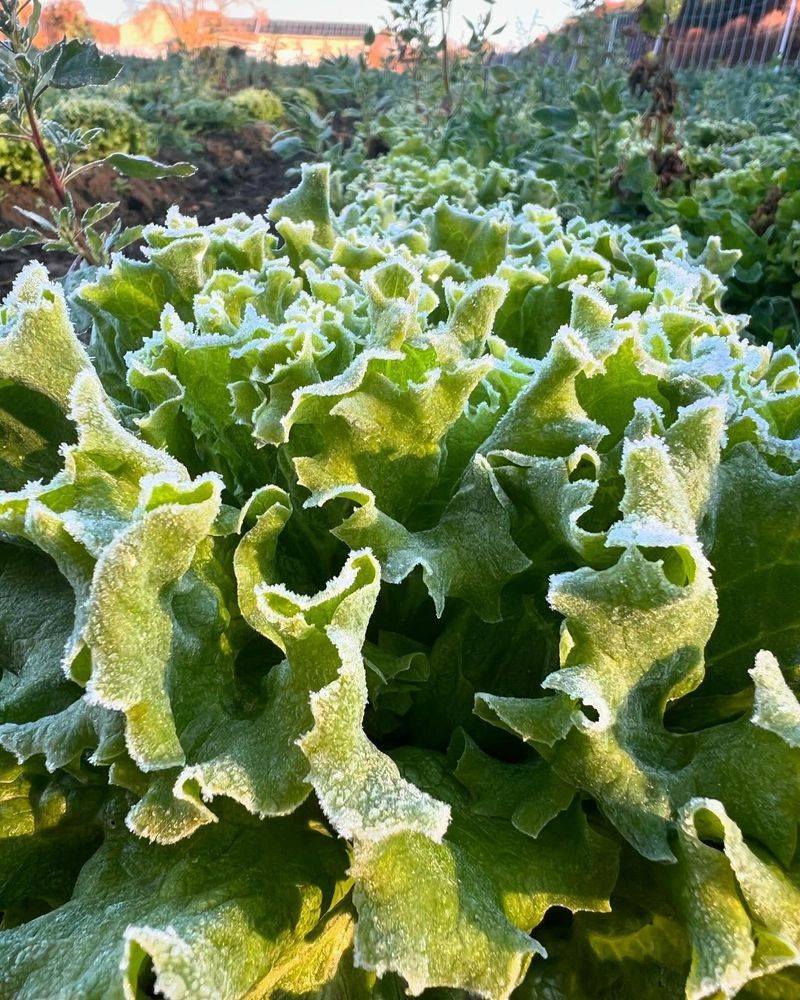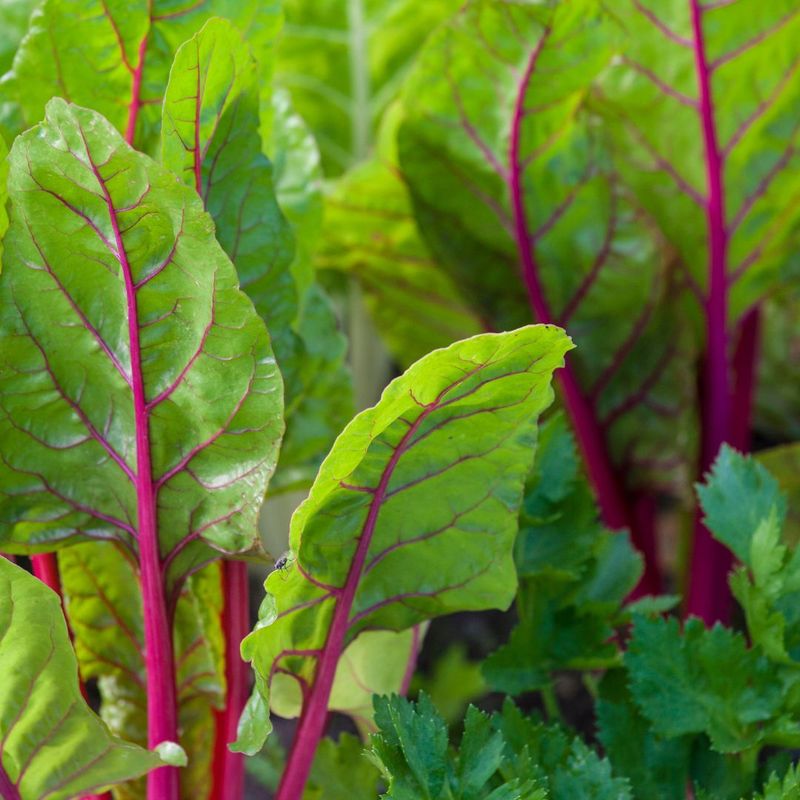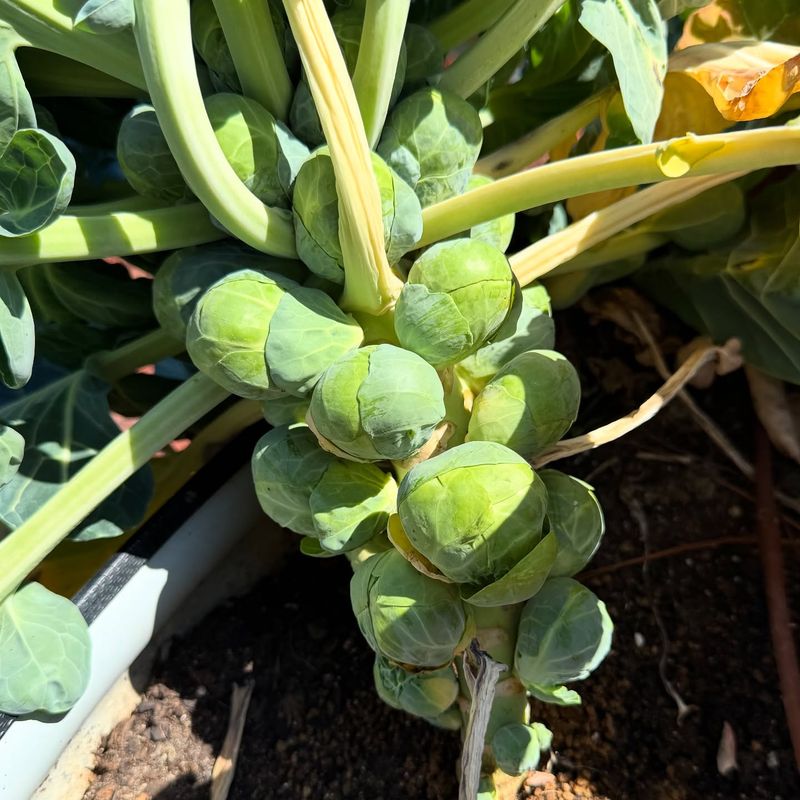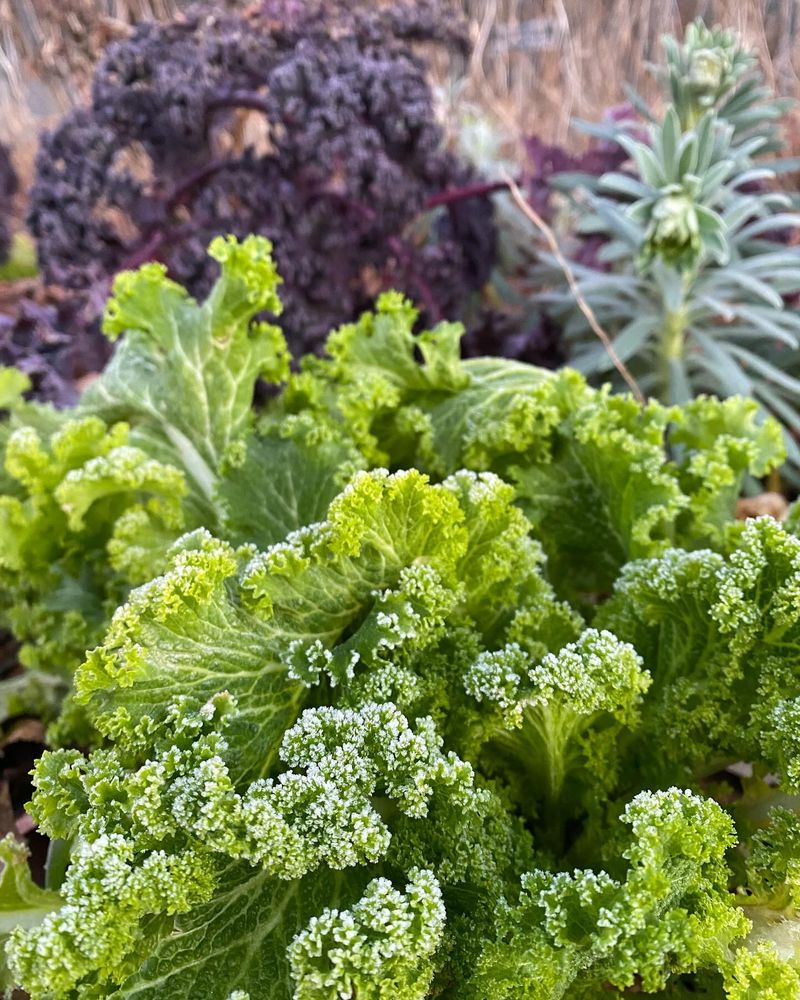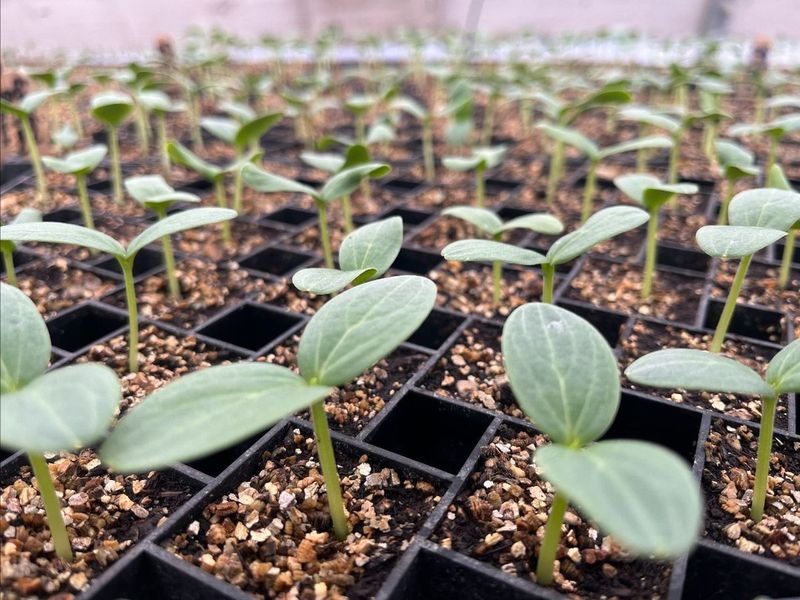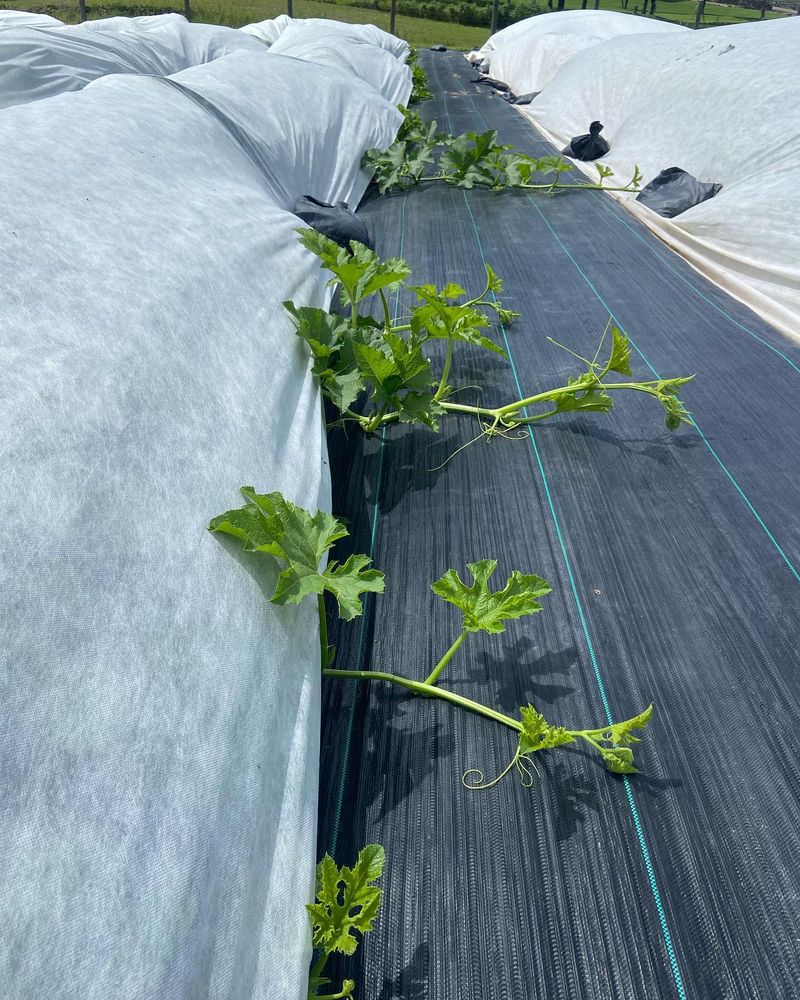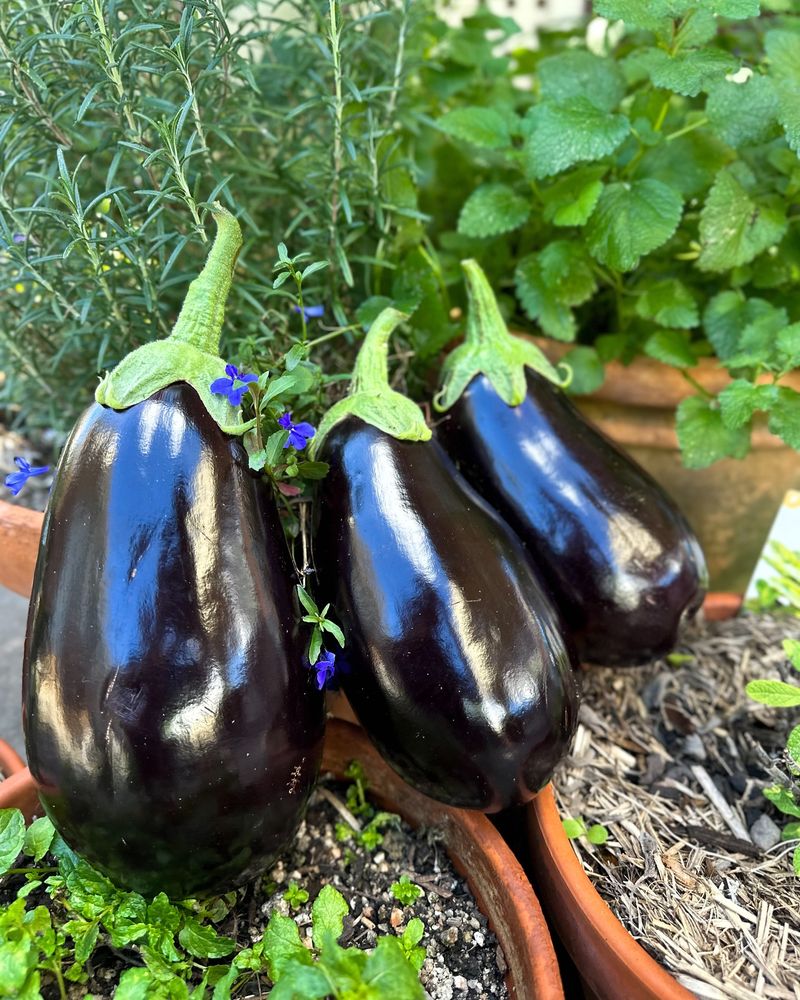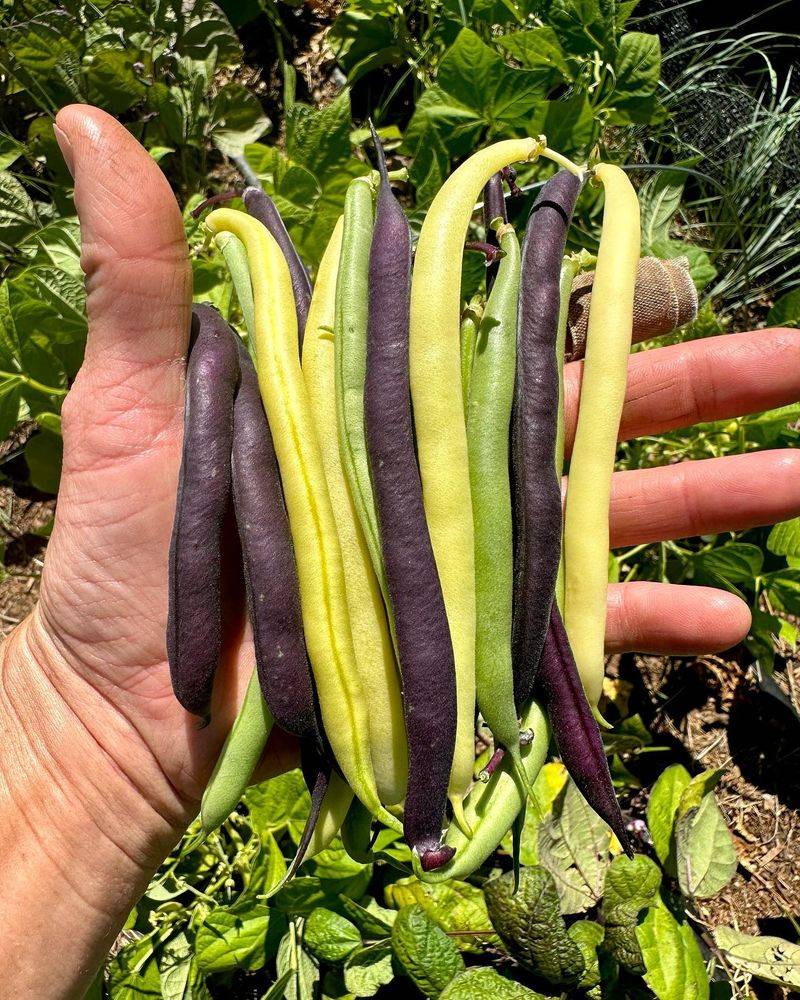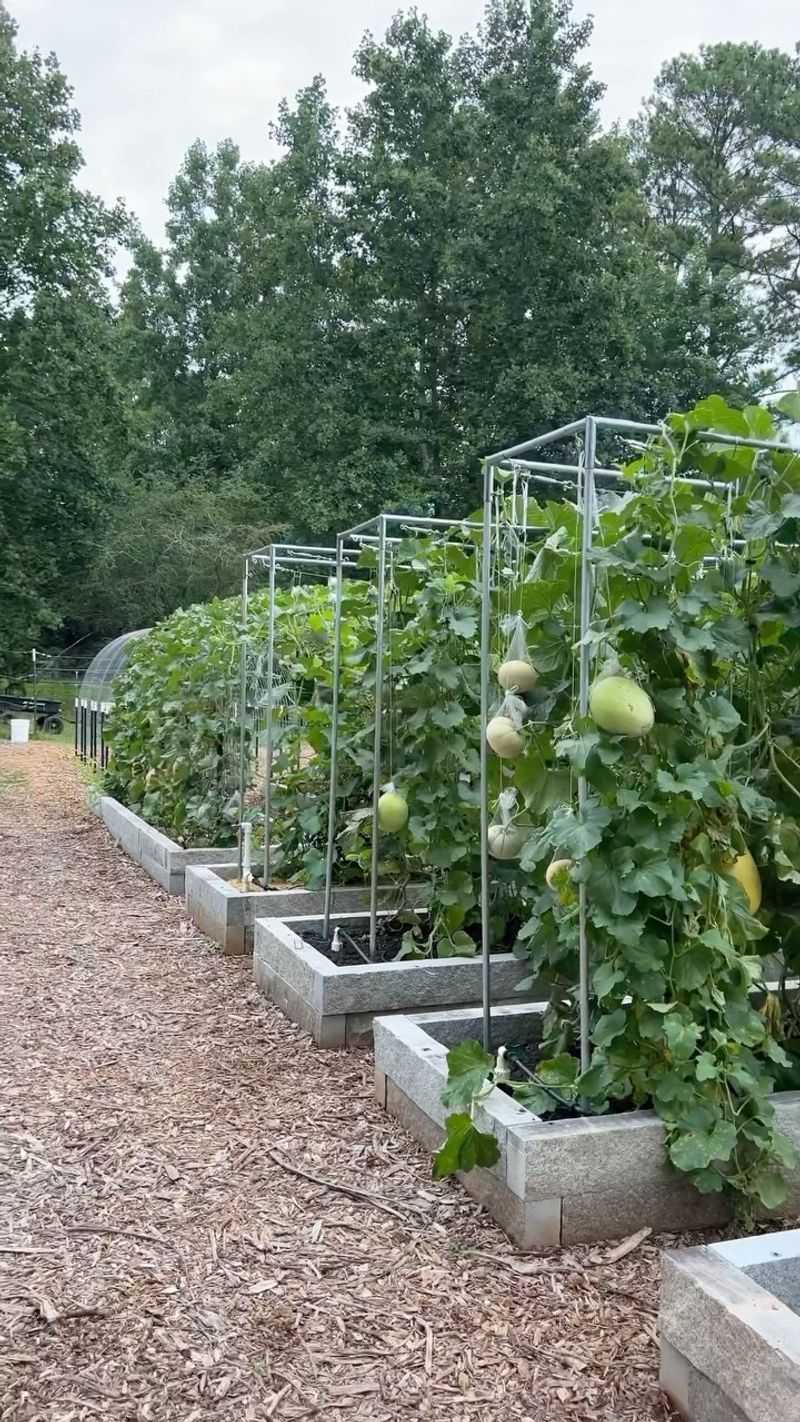As the spring season arrives, temperatures can still dip unexpectedly, bringing the threat of frost to your garden. While many vegetables thrive in cooler weather, others are far too sensitive to the cold and can suffer or even die from a light frost. Knowing which vegetables can handle a bit of chill and which ones need extra protection is key to ensuring a healthy, thriving garden. Here are 13 vegetables that survive spring frosts—and 7 that definitely can’t!
1. Kale
Kale thrives when temperatures dip slightly, its curly leaves becoming sweeter in the cold. This hardy green stands tall against the frosty nip. With its deep green hues, kale not only survives but flourishes, providing a nutritious boost. Its resilience makes it a garden favorite.
Rich in vitamins, kale can be used in a variety of dishes, from salads to soups. Plant kale early in the season, and enjoy its benefits throughout spring. Its ability to withstand frost means gardeners can focus on other, more delicate plants.
2. Spinach
Spinach loves the cool weather, soaking up the chilly environment. Its tender leaves are surprisingly tough against a light frost. Growing spinach in early spring ensures a quick, delicious harvest.
This leafy green offers vibrant color and flavor. Spinach is perfect for salads or a nutritious addition to smoothies. With its rich iron and vitamin content, it’s a health powerhouse.
Plant it in well-drained soil and watch it thrive. Its frost tolerance allows for worry-free growing, even when the temperatures drop unexpectedly.
3. Carrots
Carrots are a root vegetable that surprises many with its frost resistance. The cold actually enhances their sweetness, making them a delightful treat. Beneath the soil, they grow steadily, unaffected by the frost above.
Cultivating carrots in early spring ensures a continuous supply. They are versatile, perfect for snacking or adding to stews. Rich in beta-carotene, they support good vision.
With minimal care, carrots will reward gardeners with a bountiful harvest. Their resilience to frost makes them a reliable choice for early planting.
4. Beets
Interestingly, earthy flavor of beets intensifies in cooler weather, making them a culinary delight. Grow them in early spring for the best results. Their deep red color stands out in the garden and on your plate.
Beets are not only tasty but packed with nutrients. They can be roasted, boiled, or even pickled. Their leafy greens are edible too, adding versatility.
Beets’ frost resistance ensures they survive cold snaps, allowing gardeners to enjoy their robust flavors without worry.
5. Peas
Pea plants are surprisingly resilient, enduring the early spring frost with ease. These climbing vines thrive in cool conditions. Harvesting fresh peas is a rewarding experience, as their sweet taste is unmatched.
Plant peas early to enjoy their fresh pods throughout spring. They are perfect for snacking or adding to meals. Peas also enrich the soil by fixing nitrogen, benefitting companion plants.
Their frost-hardiness makes them an excellent choice for beginner gardeners looking to start planting early in the season.
6. Broccoli
This vegetable’s resilience makes it a must-have for early planting. Broccoli offers a wealth of nutrients, including vitamin C and fiber. It’s a versatile veggie, perfect for roasting or steaming.
Plant it early, and it’ll yield a rewarding harvest. Its ability to withstand frost provides peace of mind to gardeners.
Broccoli’s tenacity ensures it remains a staple crop, thriving even when the weather is unpredictable.
7. Cabbage
Cabbage handles frost with grace, its leaves forming a tight ball that insulates against the cold. This vegetable is a staple in many gardens due to its durability.
Cabbage can be enjoyed raw, cooked, or fermented as sauerkraut. Planting in early spring means a plentiful supply throughout the season. Its frost resistance allows gardeners to focus on less hardy plants.
Rich in vitamins K and C, cabbage is a nutritious option. Its robust nature and versatility make it a garden favorite, thriving even under chilly conditions.
8. Leeks
With their mild onion flavor, leeks are surprisingly frost-resistant. Their long green stalks grow well in cooler temperatures, making them ideal for spring planting.
Leeks add depth to soups and stews, offering a subtle sweetness. They are easy to grow, requiring minimal maintenance. Plant leeks in well-drained soil for a successful harvest.
Frosty conditions don’t deter their growth, allowing gardeners to enjoy them without worry. Leeks’ resilience and unique taste make them a valued addition to any garden.
9. Lettuce
Lettuce may seem delicate, but many varieties withstand light frosts. This leafy green thrives in cool conditions, providing fresh salads even in early spring. Its crisp texture and mild flavor are refreshing.
Lettuce grows quickly, ensuring a continuous supply. Plant it in well-drained soil and enjoy its benefits. Frost won’t harm it, making it a reliable choice.
Lettuce’s ability to bounce back from chilly temperatures makes it a staple in vegetable gardens, offering a fresh option for early harvests.
10. Swiss Chard
Vibrant stems and glossy leaves of Swiss chard stand up to frost, making it ideal for early planting. This vegetable offers a mild, slightly sweet flavor, perfect for a variety of dishes.
Swiss chard is nutritious, rich in vitamins A and K. Its ability to grow in cooler conditions provides a unique, colorful addition to gardens.
Plant it early for a robust harvest. Swiss chard’s frost-hardiness ensures a steady supply of greens, brightening both gardens and plates.
11. Collard Greens
Collard greens are tough and can handle frosty temperatures with ease. These robust greens thrive in cool weather, offering a slightly bitter taste that mellows when cooked. They are a staple in southern cuisine, often used in hearty dishes.
Growing collards in early spring ensures a plentiful harvest. Rich in vitamins and minerals, they are a nutritious addition to meals.
Their broad leaves provide a substantial yield, making them a valuable crop. Collard greens’ ability to withstand frost makes them a reliable choice for gardeners.
12. Brussels Sprouts
These veggies grow well in cool conditions, even thriving after a light frost. Their flavor sweetens with each cold night. Planting them in early spring ensures a steady supply.
Brussels sprouts are nutritious, packed with fiber and vitamins. They are delicious roasted or sautéed, offering a unique taste.
Their frost resistance makes them a great addition to gardens looking to extend the growing season. These little greens prove that size doesn’t determine toughness.
13. Mustard Greens
Mustard greens bring a peppery punch to the garden, and their resilience to frost only adds to their appeal. These greens thrive in cool weather, offering a spicy flavor that livens up dishes.
Growing them in early spring ensures a robust harvest. They are nutritious, rich in vitamins A and C. Mustard greens are versatile, great in salads or stir-fries.
Their ability to withstand frost makes them a reliable choice for gardeners. Enjoy their bold flavor and health benefits, even when temperatures drop.
14. Tomatoes Can’t Survive a Light Frost—Protect Them Well!
Tomatoes are beloved, but they shiver at the thought of frost. These tender plants require protection when temperatures drop. Covering them with sheets or using cloches can prevent frost damage.
Though they love warmth, planting them early means extra care.
Protecting tomatoes ensures a fruitful harvest, rewarding the effort with delicious, sun-ripened fruit. Their sensitivity means gardeners must give them extra attention in chilly weather.
15. Cucumbers Won’t Make It Through a Frost—Keep Them Warm!
These crisp, refreshing vegetables don’t tolerate cold well. To protect them, gardeners can use fabric covers or cloches. Early planting requires vigilance against frost damage.
Ensuring they stay warm during unexpected cold snaps guarantees a bountiful harvest. Cucumbers’ need for warmth means careful planning is essential for early growers.
16. Bell Peppers Won’t Handle the Cold—Shield Them From Frost!
Did you know that bell peppers are particularly sensitive to cold and frost, and even a light frost can damage their delicate tissue? The plants thrive in warm temperatures, and any exposure to frost can stunt their growth, cause wilting, or even kill the plant.
To protect bell peppers during spring frosts, it’s important to cover them with frost blankets or move them to a sheltered spot if possible.
If the temperatures drop unexpectedly, consider using row covers or plastic wraps to shield the plants and preserve their delicate fruit.
17. Squash Can’t Survive a Light Frost—Move Them Indoors If Needed!
These warm-weather plants thrive in temperatures well above freezing, so any exposure to frost can result in wilting, discoloration, or complete plant death.
To protect your squash, be prepared to move them indoors if temperatures drop unexpectedly or cover them with frost blankets to keep the cold at bay.
If frost is imminent, bringing them inside for the night or covering them effectively will help preserve their health and ensure you get a bountiful harvest.
18. Eggplant Can’t Withstand Frost—It Needs Protection!
Eggplants are highly vulnerable to frost and cannot withstand even a light freeze. The cold can damage their tender leaves, stems, and fruit, halting growth or killing the plant entirely.
Since eggplants are sensitive to temperature fluctuations, it’s essential to protect them from frost by covering them with frost blankets or moving them to a more sheltered spot during chilly nights.
Providing protection from the cold ensures your eggplant continues to thrive in the warmer weather, leading to a successful and healthy harvest.
19. Beans Won’t Survive a Frost—They’re Too Sensitive to the Cold!
Beans require warm soil and air temperatures to thrive, and exposure to frost can cause the plants to wilt, discolor, or stop growing altogether.
To protect them during the spring chill, cover your bean plants with frost blankets or row covers, or bring them indoors overnight if frost is expected, ensuring they remain safe and continue to grow strong.
20. Melons Can’t Handle Frost—Keep Them Safe From the Chill!
Exposure to frost can damage tender vines, leaves, and fruit of melons, leading to stunted growth or complete plant death. Since melons thrive in warm temperatures, it’s crucial to protect them from the chill by covering them with frost blankets or moving them indoors during unexpected cold snaps.
Ensuring they are shielded from the frost will help your melon plants continue to grow and produce sweet, healthy fruit throughout the season.

